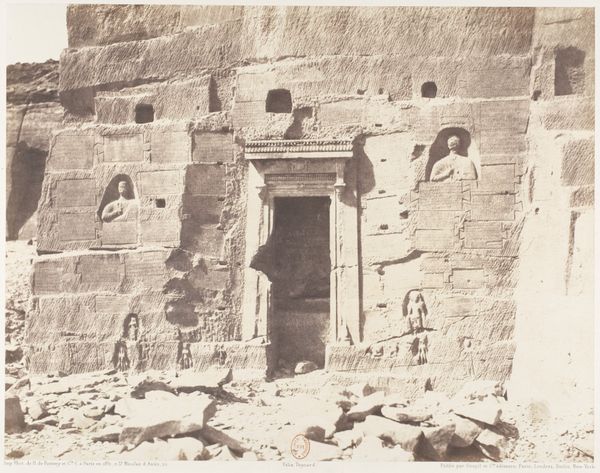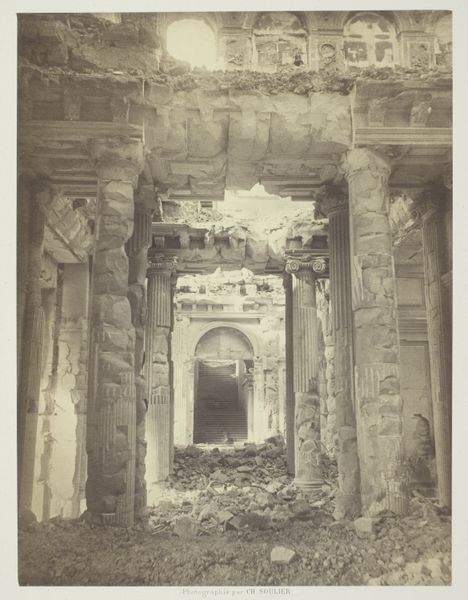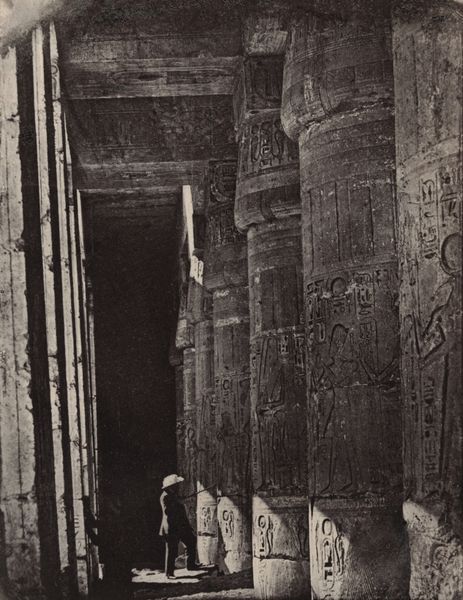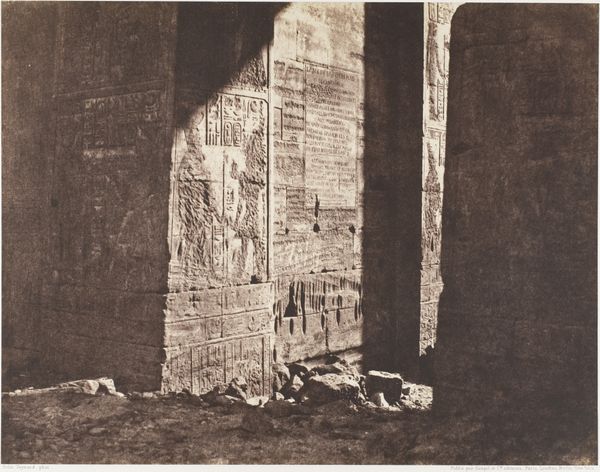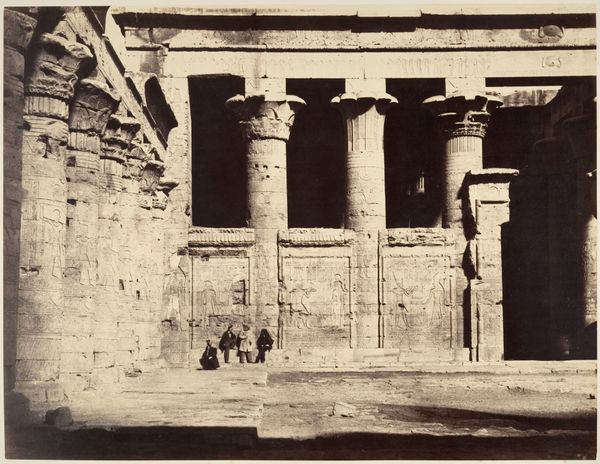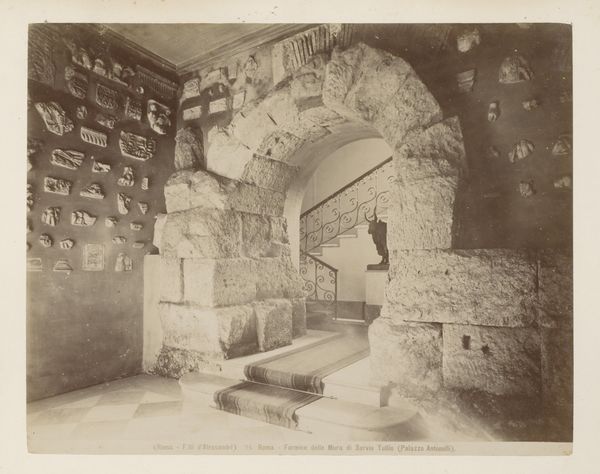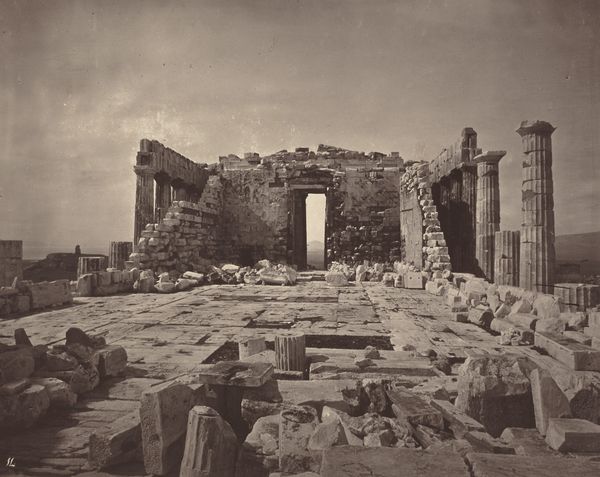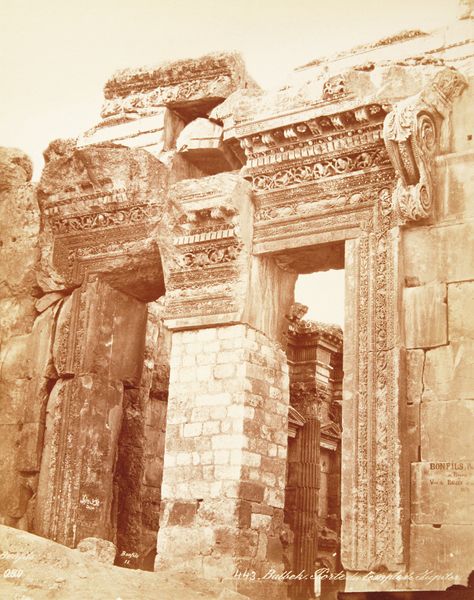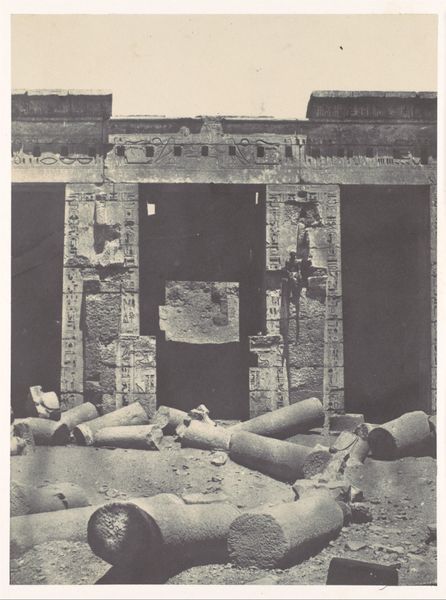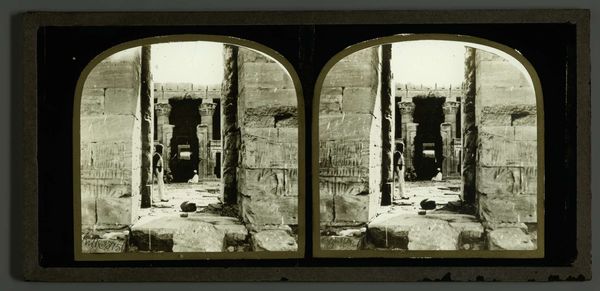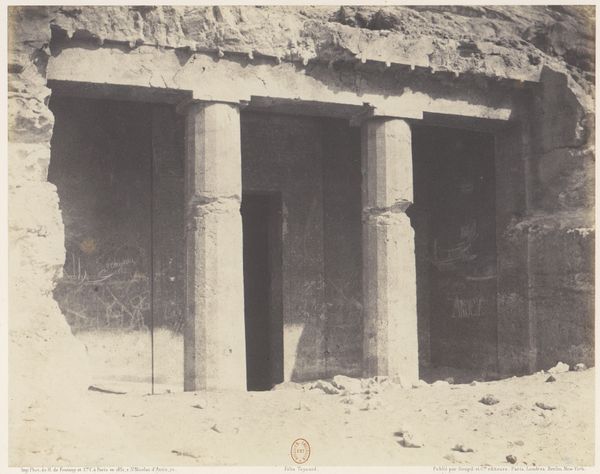
print, photography, architecture
# print
#
sculpture
#
greek-and-roman-art
#
landscape
#
historic architecture
#
photography
#
ancient-mediterranean
#
19th century
#
cityscape
#
architecture
#
historical building
Dimensions: image: 24.2 x 18.5 cm (9 1/2 x 7 5/16 in.) mount: 53.1 x 36.8 cm (20 7/8 x 14 1/2 in.)
Copyright: National Gallery of Art: CC0 1.0
Curator: I'm struck immediately by the way this image uses light and shadow; it imbues this ruin with a deep sense of antiquity and solemnity. Editor: This photograph, entitled "The Acropolis of Athens, plate 21" was created around 1869-1870 by William James Stillman. We see a figure in traditional Greek dress standing amidst the architectural ruins. Curator: Yes, and it’s not just a pretty landscape, is it? I see so much encoded in this representation of decay. Look at the careful positioning of the figure. His traditional garb set against the broken stones—it speaks to the endurance of cultural identity against the ravages of time. There’s an echo of pride, but also maybe loss? Editor: Absolutely. Consider the historical context. In the mid-19th century, Greece was defining its modern identity, newly independent, after centuries of Ottoman rule. Ancient monuments like the Acropolis weren't just relics; they were potent symbols of heritage and national ambition. Stillman’s photograph engages in that conversation. The Acropolis, as both architecture and idea, connects contemporary Greeks to a storied past, reinforcing cultural continuity. Curator: The doorway becomes a kind of symbolic portal, doesn’t it? It frames the figure, but also opens onto…what? More ruin, or the promise of renewal? It begs the question: how do we use the past to build the future? What aspects do we try to maintain, like cultural symbols? Editor: And who controls the narrative around these ruins? Photography in this era was gaining traction as a tool of documentation, but also a medium for shaping public perception. These images circulated widely, influencing European views of Greece, solidifying notions of a classical ideal alongside realities of poverty and political instability. Curator: Looking at this doorway again, I'm also noticing something subtle: the deliberate preservation, or presentation, of 'ruin'. You wonder how much is found and how much arranged. Are these fragments presented this way as a reminder of the glory? It is hard to see these choices. Editor: It highlights how we curate and interpret history. What gets highlighted, what remains in the shadows. Thanks for pointing out that nuance; it deepens my understanding of what Stillman sought to convey with this enduring image. Curator: Indeed. And it reminds me that symbols are never fixed. Their meanings shift, adapt, and constantly renegotiate. Editor: A powerful point to consider as we view historical artifacts—like this photograph.
Comments
No comments
Be the first to comment and join the conversation on the ultimate creative platform.
